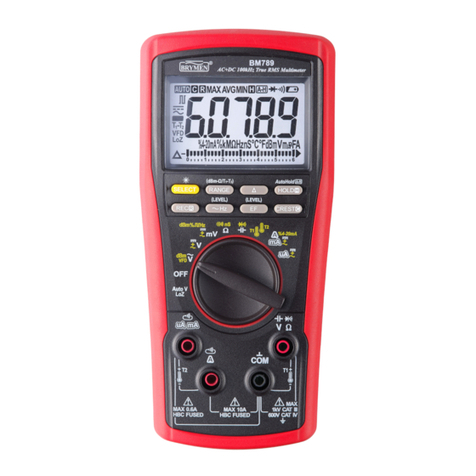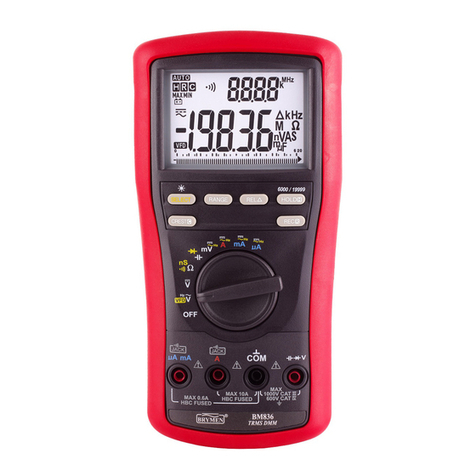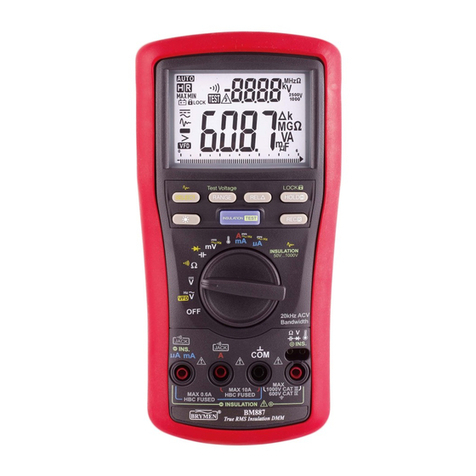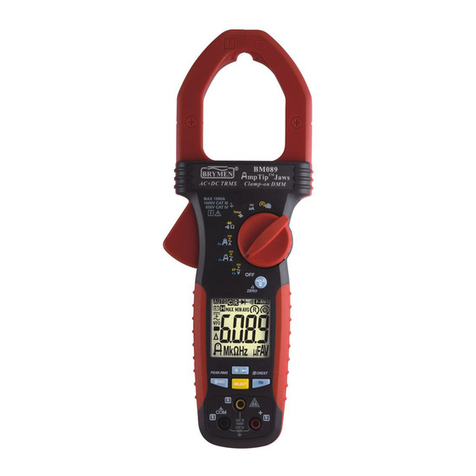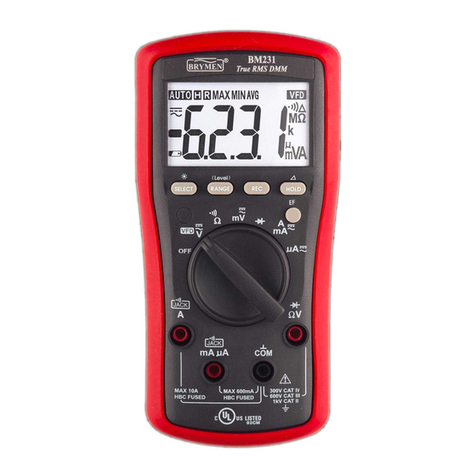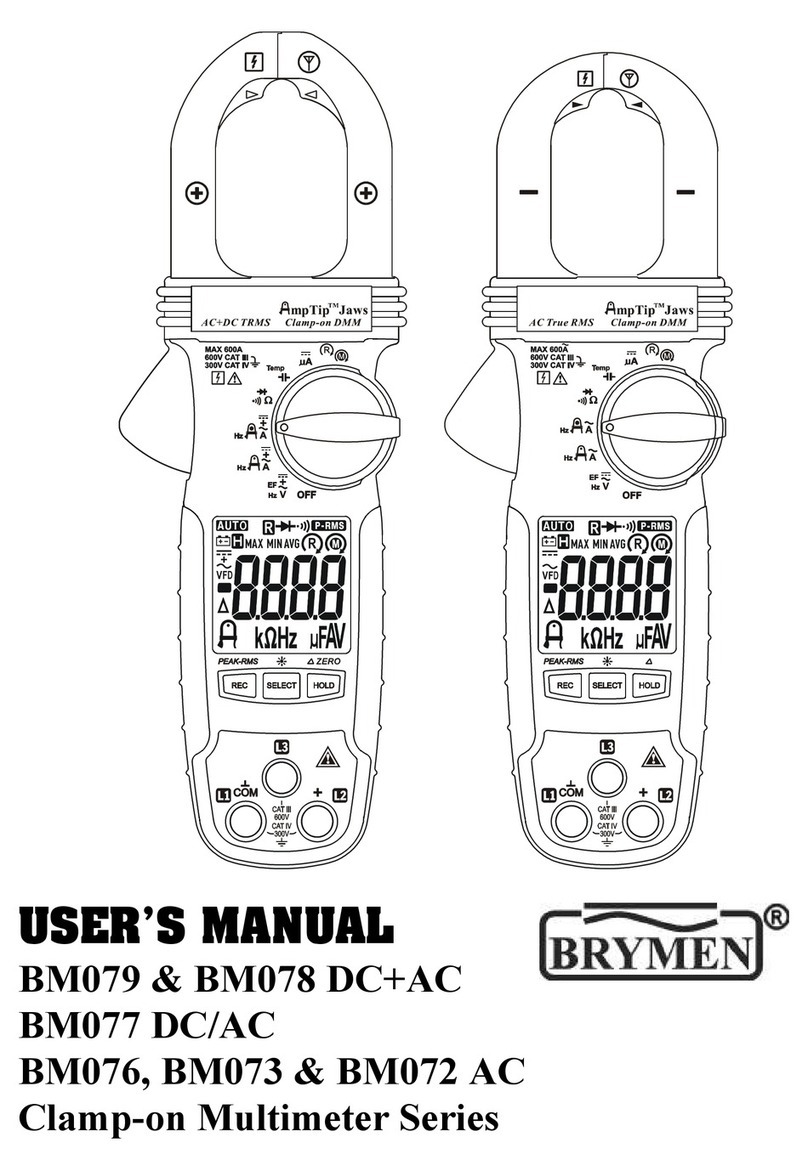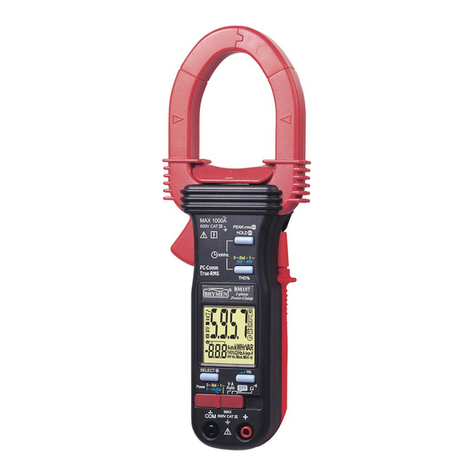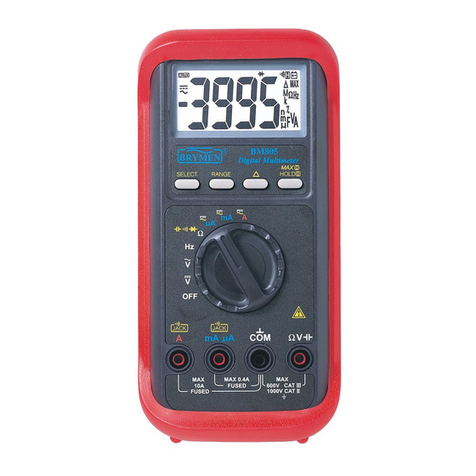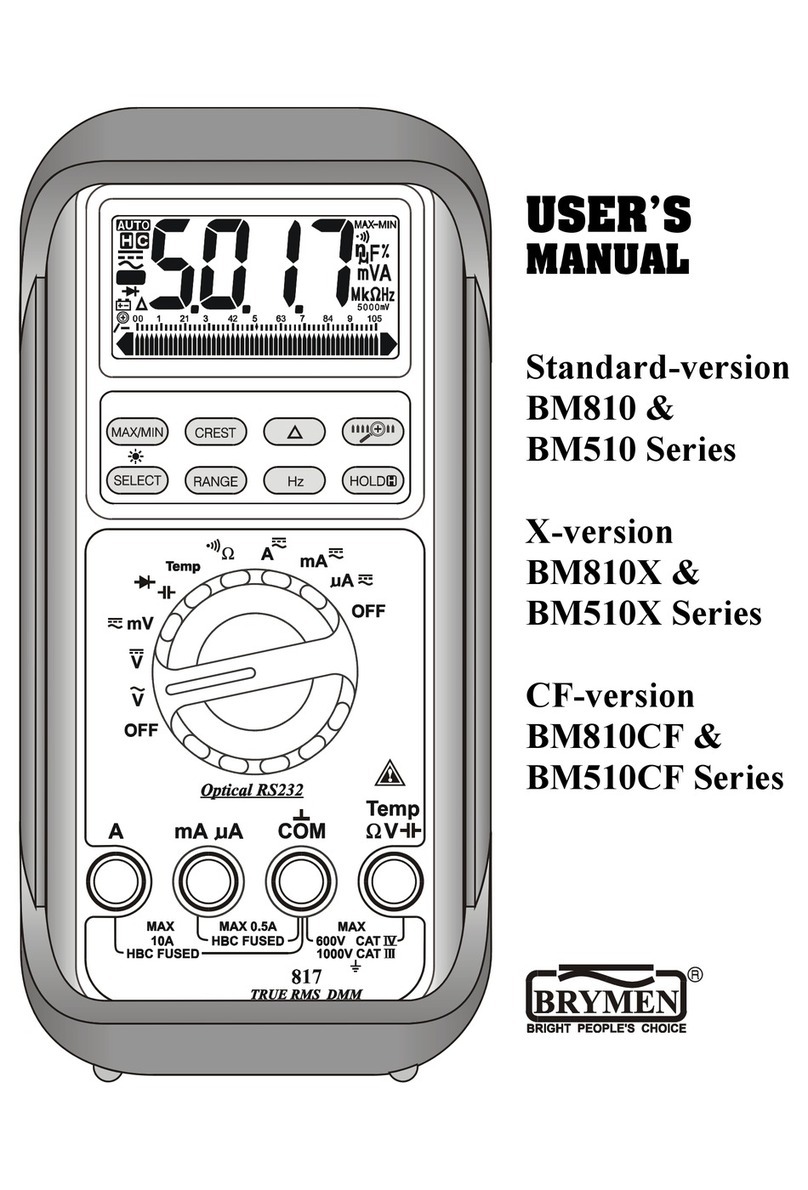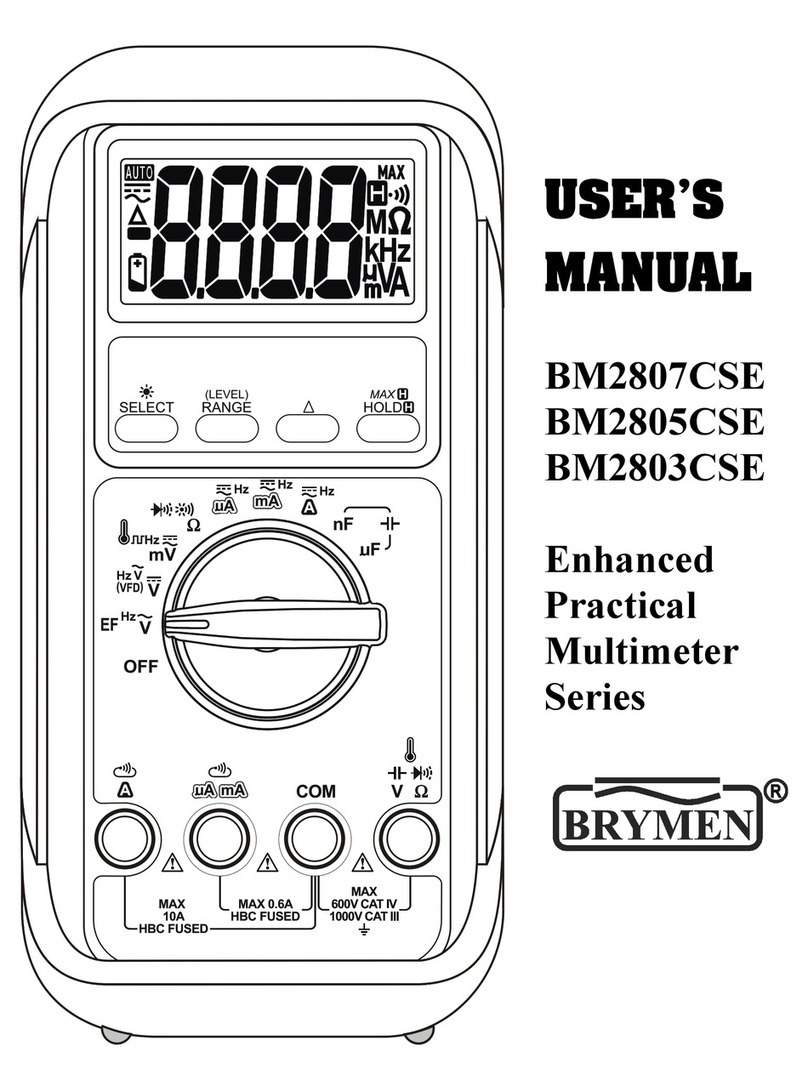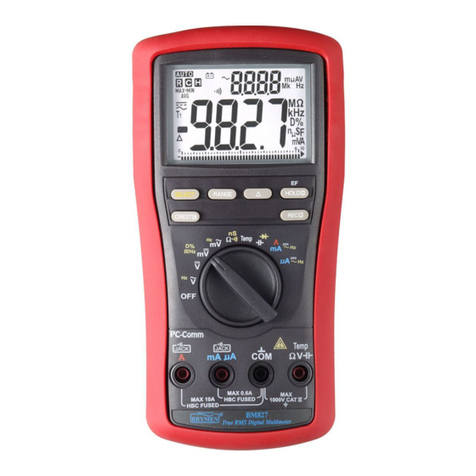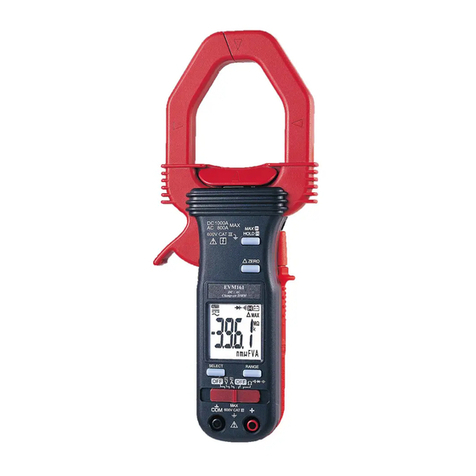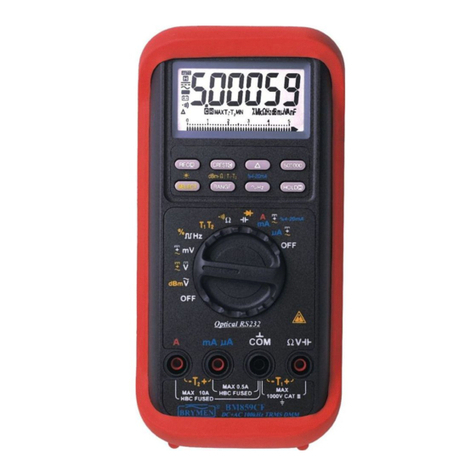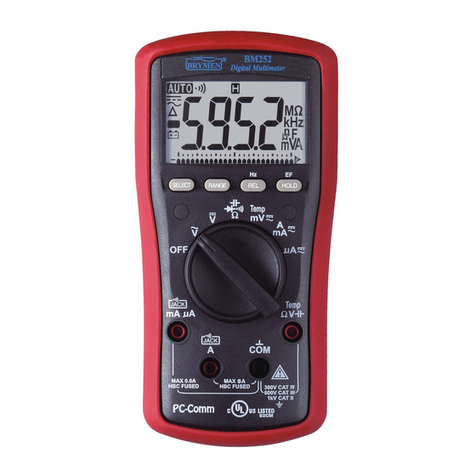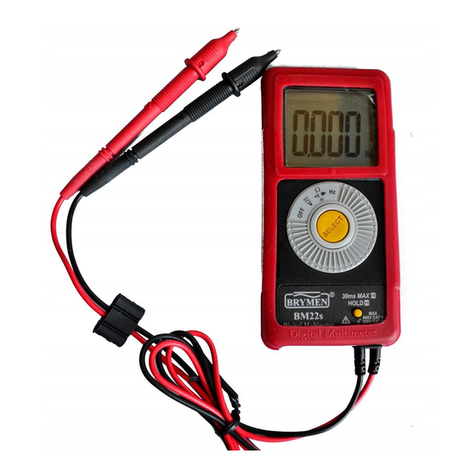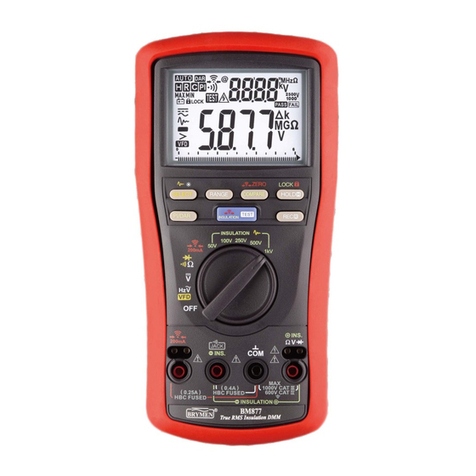International Electrical Symbols
Marking of Electrical and Electronic Equipment (EEE). Do not dispose of this
product as unsorted municipal aste. Contact a qualified recycler
Caution! Refer to the explanation in this Manual
Caution! Possibility of electric shock
Earth (Ground)
Meter protected throughout by Double Insulation or Reinforced insulation
Fuse
Direct Current (DC)
Alternating Current (AC)
3 Three-phase Alternating Current
Brief Information about Measurement Categories
Measurement Category IV is applicable to test and measuring circuits connected at
the source of the building’s lo -voltage MAINS installation. Examples are
measurements on devices installed before the main fuse or circuit breaker in the
building installation.
Measurement Category III is applicable to test and measuring circuits connected to
the distribution part of the building’s lo -voltage MAINS installation. Examples are
measurements on distribution boards (including secondary meters), circuit-breakers,
iring, including cables, bus-bars, junction boxes, s itches, socket-outlets in the fixed
installation, and equipment for industrial use and some other equipment such as
stationary motors ith permanent connection to the fixed installation.
Measurement Category II is applicable to test and measuring circuits connected
directly to utilization points (socket outlets and similar points) of the lo -voltage MAINS
installation. Examples are measurements on MAINS CIRCUITS of household
appliances, portable tools and similar equipment.
2) CENELEC DIRECTIVES
The instruments conform to CENELEC Lo -voltage directive 2006/95/EC,
Electromagnetic compatibility directive 2004/108/EC and RoHS directive 2011/65/EU.
